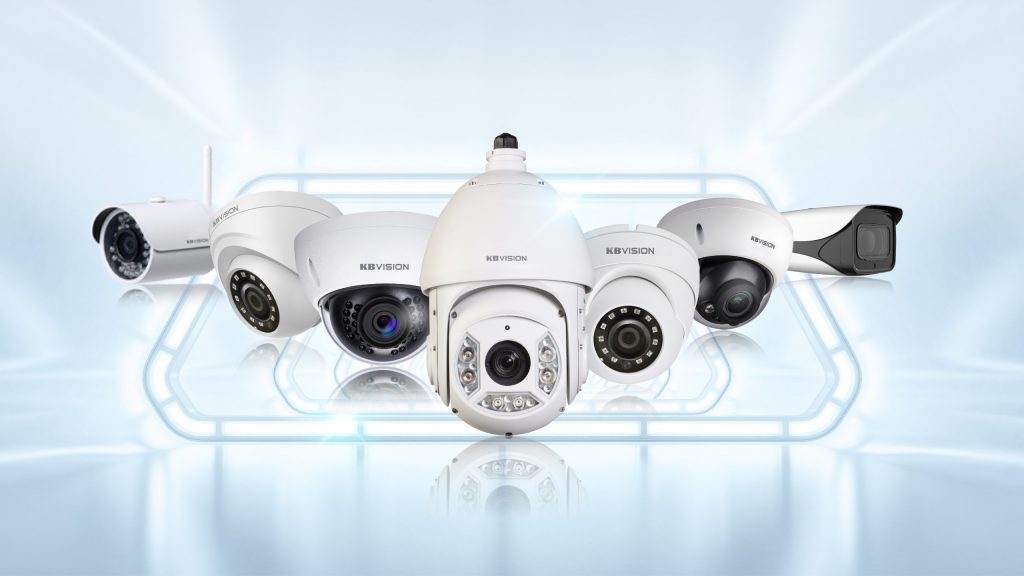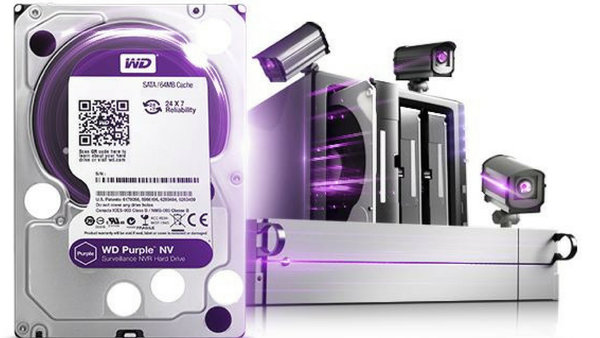Dahua fire detection and fire alarm camera DHI-HY-FT431LDP is a completely new product from Dahua with the ability to detect fire thanks to the Uncooled VOx thermal sensor (heat detection) with high sensitivity and early warning. The DHI-HY-FT431LDP code will have 2 thermal image streams and is usually different from the DHI-HY-FT121LDP code which only has 1 regular image stream. In today’s article, I will guide you in detail!
Contents
Dahua Fire Detection Camera and DHI-HY-FT431LDP Fire Alarm supports smart features such as:
- Abnormal heat point alarm
- Fire alarm
- Abnormal temperature alarm
You log in to Camera --> Event

1. Abnormal heat point alarm
Go to Cold Hot Spot --> Check Enalbe then set the following reference parameters:
- Temperature Unit: The temperature unit you can choose Centigrade (degrees Celsius) or Fahrenheit degree (degrees Fahrenheit)
- Hot Spot Color: Hot access point color – you can choose 1 color at your discretion
- Cold Spot Color: Cold access color – you can choose 1 color of your choice
- Alarm Condition: Single (arbitrary low and high temperature setting modes) – Combination (high and low temperature setting modes combined)
- MaxTempThreshold: the high temperature allowed, here I set 100 degrees, if it exceeds 100 degrees orange, it will alarm
- MinTempThreshold: the temperature level is low allowed, here I set 0 degrees, if I exceed 0 degrees orange will alarm
- Anti-dither: anti-shake to default level 3 or depending on usage needs
- Schedule: set the operating time of the alarm feature
- Event Linkage: Event link, settings for you to configure alarm sending or if you install a separate siren speaker
- Record: you can leave the default by camera
- Alarm out port: you can leave the default by camera
- Then click Apply to save the configuration

2. Fire alarm
Go to Flame Alarm --> Check Enalbe then set the following reference parameters:
In item number 3, you can select the entire alarm fire detection area or non-alarm exclusion zone.
- Duration: 3 (Break between 2 alarms)
- Repeat Alarm Time: 20
- Sensitivity: 7 (Fire detection sensitivity)
- Schedule: Full Time (Or you can set it according to the time you want in the Add Schedule section)
- Event Linkage: Event link, settings for you to configure alarm sending or if you install a separate siren speaker
- Audio Linkage: Enable
- Play Count: 3 (Number of times alarm sounds)
- File: You can select the alarm sound file when fire is detected
- Then click Apply to save the configuration
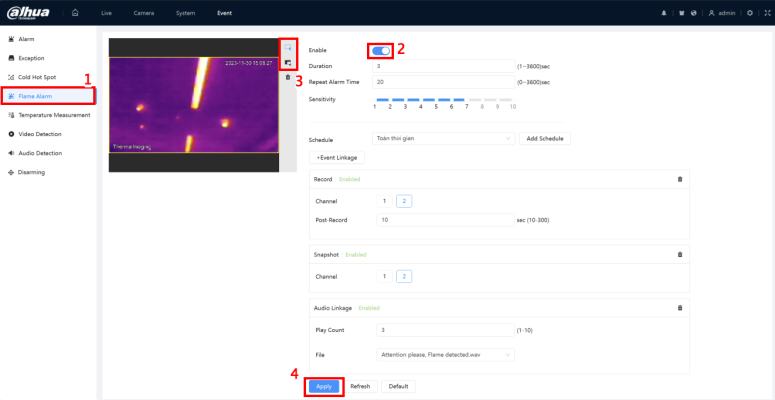
3. Abnormal temperature alarm
Go to Temperature Measurement --> Add Rule, in the abnormal temperature alarm feature will support 3 types of temperature measurement to alarm: Line (measure temperature on the drawing line), Spot (measure temperature on points), Polygon (measure temperature in the area you draw), each style will support up to 3 Rules
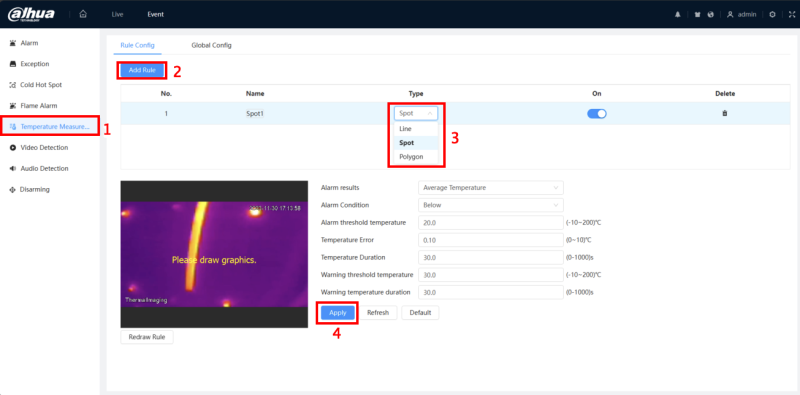
A. Measure the temperature on the line drawn
Measure temperature on the drawing line, support up to 3 lines, 3 points or 3 zones, in the Type section you select modes such as Line --> Redraw Rule to draw lines at the location to measure temperature --> Set the reference temperature parameters as follows:
- Alarm results: alarm results, you can choose the appropriate modes according to your needs, here I choose Average Temperature (average temperature)
- Alarm Condition: alarm status, you can choose Below (the temperature below will alarm), Match (suitable temperature), Above (the temperature above will alarm)
- Alarm threshold temperature: alarm threshold temperature, here I set 20 degrees, if it exceeds below 20 degrees orange, it will alarm
- Temperature Error: permissible temperature error
- Temperature Duration: temperature maintenance time, meaning that the temperature is setting the threshold of 20 degrees alarm, then the temperature reaches above 20 degrees in a certain period of time, you will alarm
- Warning threshold temperature
- Warning temperature duration: temperature alarm interval
- Then click Apply to save the configuration
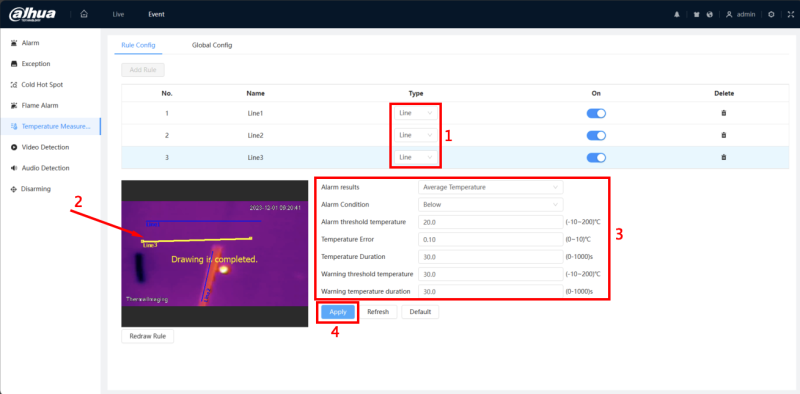
B. Point temperature measurement

C. Temperature measurement by zone
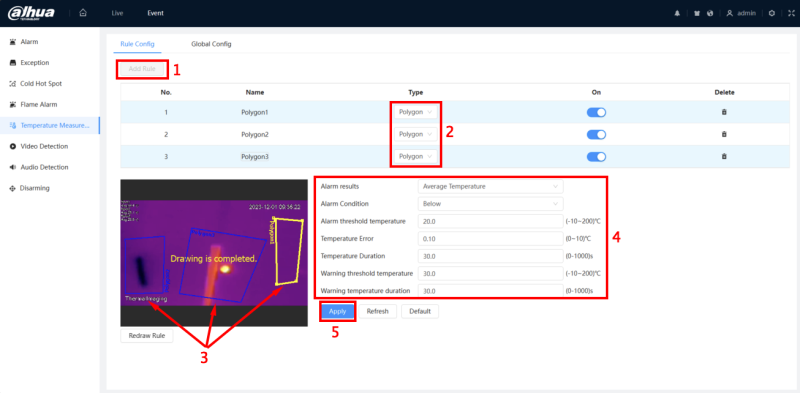
D. Set alarm parameters as previous features
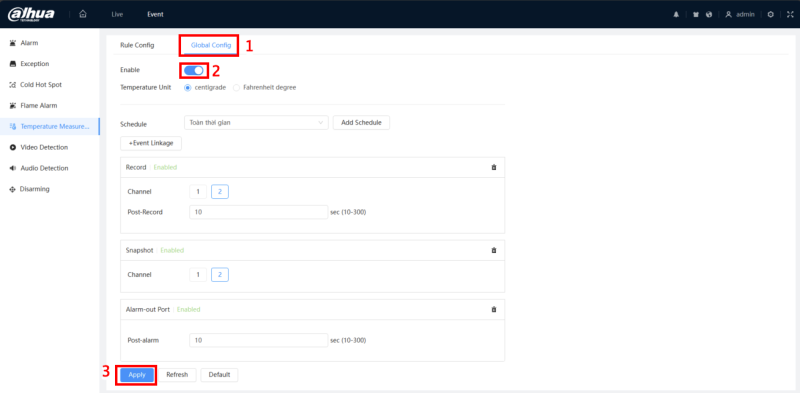
Thank you for following cctvit.net article – good luck!


 Tiếng Việt
Tiếng Việt



